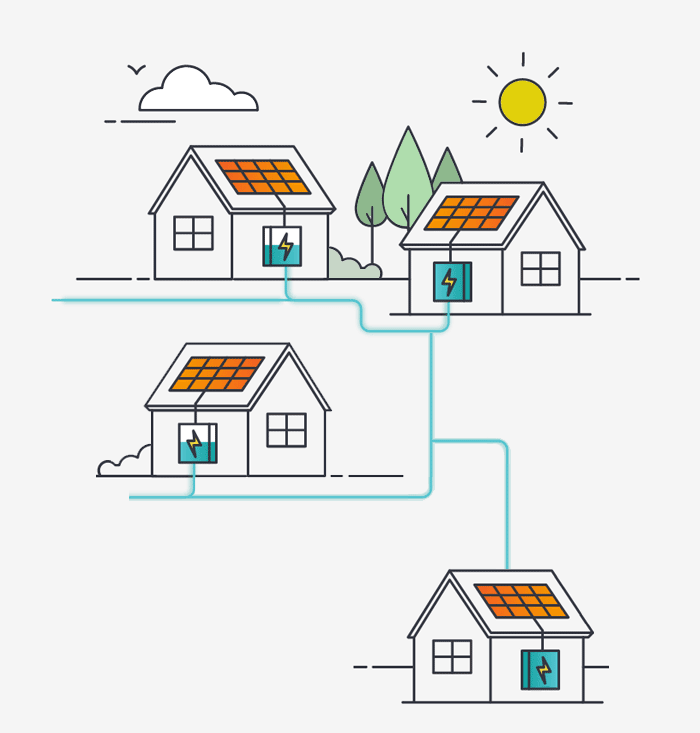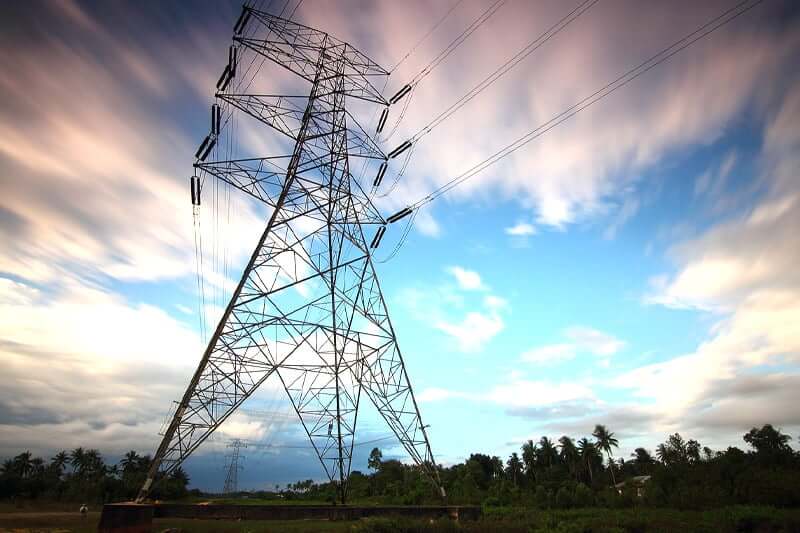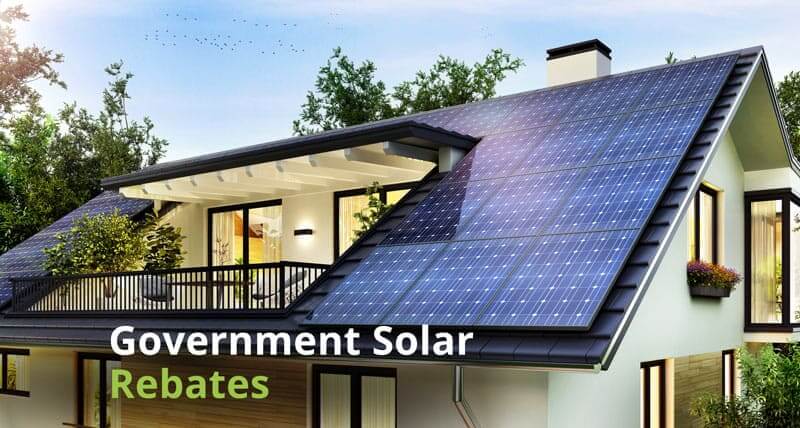Home Virtual Power Plants
Virtual Power Plants: Complete Guide 2023
Electricity consumption is as unpredictable as a roo bounding through the Aussie scrub, plummeting when folks are snoozing and skyrocketing on those scorcher days as everyone’s air conditioners work double time. Despite these fluctuations, energy providers must remain on their toes, prepared to manage the surge in demand to avert the feared blackouts or those irritating brownouts that can knock our devices into the Dreamtime. Ever pondered how power travels from the massive generators to your house, or how to protect your gadgets from those sudden drops in voltage? Stick around. You’re about to delve into a tale of electric highs and lows, brimming with **hot tips** to safeguard your electronics against an unforeseen shock!
To satisfy peak demand, utilities frequently increase power production, typically through “peaker plants” or by acquiring electricity from another supplier. These can be more expensive and polluting options, emitting more greenhouse gases than conventional operations. Virtual power plants provide an option that is frequently less expensive and greener for utilities and can even save you money as a consumer.
And, In this article, you will understand Virtual Power Plants in depth.

Table of Contents
ToggleWhat exactly is a virtual power plant?
A virtual power plant (VPP) is a cloud-based power plant that combines heterogeneous distributed energy resources (DER) abilities to improve power production and trade or sell power in the electricity sector. Virtual power plants are already used in the United States, Europe, and Australia.
A Virtual Power Plant is a collection of dispersed energy assets that may be handled remotely as a single entity. A VPP works by combining small domestic distributed power storage or generation sources and combining them to balance grid demands at peak times.
For example, 1,000 electric vehicles are linked together to function as one giant battery to balance the grid.
A VPP is made up of numerous energy resources. They can be a single asset class, such as EVs, or a diverse mix of assets, such as batteries, EVs, and CHP facilities. The commodities in the VPP are also decentralized, which means they are connected to the grid but operate independently, delivering independent value to the grid outside of the VPP.
VPPs are finally despatched from central control. The ability to aggregate flexible capacity and help balance the grid is an important feature of VPPs, which we will discuss further below.
Classification of Virtual Power Plants
Virtual Power Plant functionalities are divided into two categories:
Commercial VPP (CVPP)
A CVPP (commercial VPP) is concerned with the amount of energy and the pricing at which it can provide the electricity markets. A CVPP is based on bilateral contracts among DG units and consumption units. To remove the contracted power from the system, the bilateral contract information should be transmitted to TVPP.
Small-scale energy providers were unable to participate in energy markets on their own. As a result, CVPP allows them to participate in energy markets. CVPP’s functions can be summarised as follows:
- Trading in the wholesale energy marketplaces.
- Selling DER energy in electricity markets.
- VPP power output and consumption prediction.
- Establishment of DER bids and submission to power markets
- Optimisation of daily manufacturing schedule.
- Managing trading portfolios.
- Visualisation and involvement of DER units in power markets.
Technical VPP (TVPP)
A TVPP (Technical VPP) is vital for the efficient and correct operation of DGs, power storage units, and controllable loads, as well as for managing energy transfer among VPP coalitions and auxiliary services.
TVPP gets data from CVPP about bilateral contracts between DGs and consumption components. The data received must include;
- Supply and demand forecasting
- Positioning of DG units and consumption,
- Placement and size of the energy storage system, and
- Maximum capacity of individual DG units.
TVPP enables the correct and secure functioning of the power system while taking into account the physical limits and system support facilitation services provided by the VPP. TVPP provides the following functions:
- It determines fault location.
- It offers maintenance assistance services.
- It examines assets in real-time.
- It provides balancing solutions, local network administration, and ancillary service deployment.
- It gives DER units exposure in energy markets.
- It ensures that the power system is running in a safe manner.
What do VPPs have to do with DERs and demand response?
In case of DERs
Virtual power plants are crucial in energy transformation. VPPs are, at their heart, a collection of Distributed Energy Resources (DERs) that may be managed as a single huge energy asset. While a single DER is often a single EV, thermostat, or solar inverter, a VPP comprises thousands of similar devices. For Instance;
- Electric Vehicles are a vital part of VPPs. EVs’ flexibility allows them to consume excess renewable energy production while also acting as real-time demand response assets. EVs are essentially mobile grid resources. VPPs instruct EVs to charge only when there is excess supply on the grid or when prices are low, allowing EVs to function as a dynamic DER asset over time.
- VPPs and batteries work well together. When there is an oversupply of energy and prices are low, batteries can store extra energy and dispatch it when energy is scarce and costs are high. Solar plus battery storage is a potent DER combination that will increase grid stability and reliability.
- VPPs will be able to fully utilise thermostats, which are rapidly being regarded as DERs due to their capacity to assist the grid in becoming more stable during periods of instability or peak demand. VPPs can also provide real-time signals to thermostats and limit the use of HVAC systems to lower the energy load and profile of consumers during instances of a grid disturbance.
In Case Of Demand Response
VPPs can be utilised as demand response. Many different types of energy assets can be linked and exchanged in flexibility markets, although the smallest DERs will not be eligible to partake on their own.
They can, however, when grouped together as a VPP. Demand response is becoming more widely available in the home sector, where VPPs play a vital role in allowing single EVs and thermostats to participate. This will accelerate our transition to a more sustainable future.
How Virtual Power Plants can aid with climate change relief
Increased use of renewable energy
The primary advantage of renewable energy resources (RESs) over non-RESs is that they have no immediate carbonisation impact on the environment and do not contribute to global warming caused by carbon emissions. Moreover, the energy market liberalisation has resulted in the realisation of the virtual power plant (VPP) concept.
A VPP is a unified platform for distributed energy resources that bring together the capacities of diverse renewable energies in order to improve power generation and administration while also catering to the buying and selling of energies in the wholesale electricity market.
Because of their special ability to handle the grid, VPPs aid in the development, integration, and utilisation of renewable energy resources such as wind and solar.
More stable grid
The benefits of Virtual Power Plants can assist save the world by dispatching DERs to give grid flexibility and relief. VPPs are intended to alert DERs when the grid requires assistance. This alleviation can take the form of reducing load and requiring DERs to utilize less energy.
For example, telling EVs to stop charging. When the energy supply is low, the relief can also take the shape of additional energy, such as a battery or an EV released into the grid. This flexibility helps the grid balance supply and demand, reducing the need for dirty peaking power stations fuelled by fossil fuels to run as often.
Because of their ability to dispatch DER assets in real time, VPPs contribute to a more stable grid. When the energy supply is short, these DER assets, such as batteries and EVs, can supplement the grid. When the grid is pressured, VPPs can also request that DERs reduce or delay their energy use.
Visit our homepage for more articles on VPPs and distributed energy.

How do Virtual Power Plants generate revenue?
Traditional thermal power plants provide capacity as needed while providing various grid-stabilizing ancillary services such as voltage stability and frequency response. VPPs can profit from both sorts of operations.
- VPPs, for example, have already been deployed to avoid the requirement for grid enhancement on the capacity front. In one scenario, an Australian utility called Evoenergy could save roughly AUD 2 million (USD 1.6 million) by avoiding a substation update by adopting a VPP.
- In Oregon, Portland General Electric is putting together a 4-megawatt VPP as the first step toward 200 MW of distributed flexibility. Households participating in the VPP project receive a battery purchase rebate or a monthly payment of $20 or $40 for using existing batteries.
How much does it cost to set up a VPP?
The cost of setting up a VPP is basically the cost of setting up a solar system on your home or buying an Electric Vehicle.
Once you have a power-producing or storage asset, you can join a VPP network which will use the power generated or stored by your system or battery when it is needed at peak times and pay you for the power used.
Which companies are developing Virtual Power Plants?
In recent times, most VPP innovators have been acquired by large crowds, pushing the virtual power plant concept into the mainstream. As an example:
- Ormat Technologies, a geothermal and renewable energy firm, acquired Viridity Energy at the start of 2017.
- Greensmith Energy was purchased by Wärtsilä, a Finnish power company, in the same year.
- Enel, the Italian utility, has gone on a distributed energy technology shopping spree, acquiring Demand Energy, EnerNOC, and eMotorWerks to set the groundwork for its VPP service.
- Engie invested* in Kiwi Power of the United Kingdom in 2018 and Tiko of Switzerland in 2019.
- In 2019, Shell acquired Sonnen, a German home battery manufacturer that is developing VPPs in Australia, Germany, and the United States.
- Green Mountain Power of Vermont is collaborating with software firm Virtual Peaker to send Tesla Powerwall batteries from customers’ homes into the New England network.
- Next Kraftwerke of Germany is negotiating on electric vehicle battery capacity in the Dutch secondary reserve marketplace, while Tibber of Germany is doing the same.
- Sunrun, a residential solar company, has launched solar-plus-storage VPPs in markets ranging from Massachusetts to California and Hawaii.
- Moixa, a smart storage company based in the United Kingdom, manages 22,000 storage systems in Japan, as well as smaller VPP deployments overseas.
FAQ's
A Virtual Power Plant’s primary purpose is there to provide the following objectives to collaborating partners:
(a) Energy trading: They give distributed generator owners new and commercially feasible energy trading options in competitive wholesale electricity markets.
(b) Network services: They provide transmission and distribution system operators with system support facilitation services.
(c) Balancing services: They balance production and consumption demand by utilising different markets in real-time. All collaborating parties profit economically, technically, and environmentally as a result of this.
(d) Optimising: Improving production and consumption inside the VPP.
An optimum VPP system is made up of three parts: DG units, energy storage components, and information and communication technology (ICTs).
Distributed Generator Units (DG)
The use of DGs in the electrical sector has grown dramatically. This is due to three factors: They are small-scale energy generating and storage units positioned near client sites. The installation of DGs minimises transmission network losses and can enhance grid viability and voltage stability.
Energy Storage Components
Energy storage components are critical to VPP operation, particularly for RESs like WT and PV systems, whose output is very uncertain and varied due to weather conditions. The energy storage system is a clever technique of storing energy that gathers and stores solar and wind power and delivers it when it is most needed. It optimises the supply and demand in this way.
Information And Communication Technology (ICTs)
Information and Communication Technologies are playing an important role in EMS. They manage all other aspects of the VPP in a bidirectional fashion. ICTs are used to collect data from scattered RES, storage components, and consumption units. They guarantee that the VPP components work together and that energy flows smoothly.
Virtual power plants enable renewable energy to be pumped into the grid at a lightning pace to resolve frequency and voltage imbalances, local disruptions or disturbances and keep the system stable by aggregating hundreds of individual home batteries.
Table of Contents
Toggle




